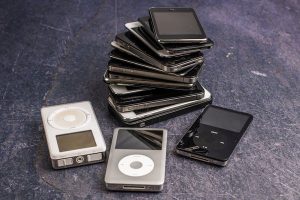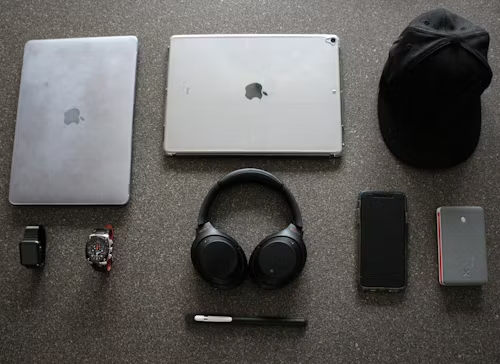Investing in pre-owned gadgets to resell them later offers numerous benefits. Not only does it contribute positively to the environment, but it also helps you save money. However, to maximize your investment, it’s essential to understand which items retain their value over time and which ones experience rapid depreciation. With this knowledge, you can strategically plan your purchases with our Used Gadgets Purchase Tips, ensuring you maintain as much value as possible and keep more money in your pocket.
Used Gadgets Purchase Tips: The 3 Easy Buy and Sell Guide!
Gadgets with Resilient Resale Values
When navigating the vast landscape of online marketplaces such as Craigslist, eBay, and similar platforms, it becomes apparent that not all gadgets are created equal when retaining their value over time. In this ever-evolving digital age, where technology swiftly advances, and consumer preferences constantly shift, certain products stand out for their enduring appeal and ability to command prices closer to their original retail cost, even in the secondhand market.
Apple products, in particular, exemplify this phenomenon, as highlighted by insights from Sara Beane, Media Relations Specialist at Swappa. According to Beane, “iPhones, MacBooks, and Apple Watches are among the most sought-after items in the realm of pre-owned gadgets.” She further notes, “The consistent demand for Apple products is a testament to their enduring value proposition, as they tend to depreciate slower than their counterparts.”
A closer examination of sales data from prominent platforms like Swappa corroborates this assertion, revealing intriguing patterns regarding the resale values of various Apple devices. Notably, iPhones emerge as stalwart performers, with their prices holding firm and maintaining a closer alignment with their original manufacturer’s suggested retail price (MSRP) within the initial two to three years of ownership, especially when juxtaposed against competing products in the market. While the disparity in value may gradually diminish with time, other Apple offerings, such as iPads, MacBooks, and Apple Watches, continue to exhibit a significant price differential, even as they age beyond the timeframe above.
What accounts for this phenomenon? It’s a multifaceted interplay of factors, including Apple’s brand reputation for quality and innovation, the enduring popularity of its ecosystem, and the perceived prestige associated with owning Apple products. Moreover, factors such as robust software support, consistent software updates, and a vibrant resale market ecosystem further bolster the value proposition of Apple devices, making them a preferred choice for many discerning consumers.
By recognizing and understanding the gadgets that hold their value well in the secondhand market, savvy consumers can strategically navigate their purchasing decisions to maximize their return on investment and derive greater satisfaction from their tech acquisitions.
Beane acknowledges that certain products on both smartphone platforms demonstrate resilience in maintaining their value over time. For instance, while slightly trailing behind iPhones, Samsung’s Galaxy line and Google’s Pixel line still outperform many competing Android brands in terms of retaining their value.

This trend extends beyond smartphones to other well-known brands dominating the new market. Brandon Vaughan, spokesperson for OfferUp, elaborates, “Typically, top-selling items on our platform include renowned technology brands such as Apple, Samsung, PlayStation, Xbox, and Nintendo.” Despite the abundant supply, sustained high demand ensures these products sell well.
This means you can confidently expect a buyer for that PS4 you purchased solely for playing God of War, even amidst a competitive market. Moreover, even if your product falls into a niche category, leading brands maintain their value for extended periods. Anecdotal evidence suggests this phenomenon holds for specific cameras and audiophile headphones, although less so for audiophile speakers, which may face challenges due to their size, necessitating local sales in areas with limited demand.
It is essential to recognize that these market dynamics are subject to fluctuations over time. Both spokespeople highlight the surge in demand for video game systems during the pandemic, with the Nintendo Switch particularly experiencing a rise in value above its retail price due to stock shortages.
Thus, while brand recognition and popularity significantly influence long-term value, seasonal trends and external factors also considerably impact it. For example, the release of a new iPhone model typically triggers a rapid decline in the value of the previous generation. Therefore, if you have a spare phone on hand, it may be advantageous to sell the last generation a few weeks before Apple introduces new models to capitalize on higher resale prices.
Gadgets Prone to Rapid Depreciation
While specific gadgets maintain their value admirably, others experience a notable decline in worth over time. In these cases, selling a used gadget may result in a more substantial loss.
Consider, for instance, the realm of Android phones. While devices from reputable brands like Samsung’s Galaxy and Google’s Pixel lines generally hold their value well, lesser-known Android phones with lower demand tend to depreciate faster. Examining Swappa’s data concerning the LG G8 ThinQ illustrates this phenomenon vividly. Despite being a year newer and commanding a higher launch price than the Galaxy S9, the LG G8 ThinQ boasts a slightly lower average selling price—a clear indicator of diminished demand.
Similar trends are often observed in the laptop market. While premium laptops such as MacBooks retain their value relatively well, many Windows laptops, particularly budget or midrange models from lesser-known brands, experience a significant drop in value shortly after purchase. Anecdotal evidence supports this observation, with users acquiring brand-new Windows laptops at a fraction of their retail price despite offering commendable performance even years later.
The underlying reasons for this phenomenon are multifaceted. In the case of Android and Windows ecosystems, the sheer diversity of manufacturers and product lines results in lower demand for any specific model. Consequently, consumers may prioritize price over brand loyalty, reducing the resale value of particular gadgets.
While some gadgets maintain their value due to strong brand recognition and consumer demand, others face rapid depreciation driven by market dynamics and consumer preferences. Understanding these trends can inform purchasing decisions and help mitigate potential losses when selling used gadgets.
Similar trends can be observed in the television market. If most consumers prioritize affordability and size when purchasing TVs, high-end models may need help to fetch their actual value on the resale market. To remain competitive amidst a sea of budget-friendly options, sellers of premium TVs often find themselves compelled to lower their prices significantly or endure prolonged waiting periods for a suitable buyer to emerge.
Indeed, a glance through Swappa’s home tech section reveals many products listed at fractions of their original price tags. For instance, a “Mint” Roomba 960 and a typical 3rd-gen Nest Thermostat are available at 60 percent of their respective Amazon list prices. Moreover, the market saturation of products like Amazon Echos and Google Nest Homes, often acquired for free or as part of bundle deals, has led to a continuous influx of brand-new listings priced well below the manufacturer’s suggested retail price (MSRP).
The Price-Quality Paradox: Why Lower Prices Don’t Equal Lower Quality
It’s a common misconception that heavy depreciation signifies a product’s inferior quality, but the reality is far more nuanced. Take, for instance, the Nest Thermostat and the Roomba 960—both highly acclaimed products in their respective categories despite experiencing significant price drops in the used market. Similarly, brands like Acer, Lenovo, and Motorola produce stellar products that may not enjoy the same level of demand as industry giants like MacBooks and Surface laptops yet maintain exceptional quality and performance.
Furthermore, just because a product sells at a fraction of its original price doesn’t necessarily indicate a decline in performance or functionality. Consider the case of Sony’s X950G TV, which may be refurbished and available at half the cost of the latest X950H model. Despite the price differential, the two models often boast similar performance levels, challenging the assumption that lower prices equate to inferior quality.
It’s essential to clarify the purpose of this discussion: it’s not to dissuade consumers from purchasing products that depreciate quickly. Instead, it highlights that factors beyond quality influence a product’s resale value. If a product receives glowing reviews and is recognized for its excellence, its lower resale value may reflect lower demand rather than diminished quality. This allows savvy shoppers to capitalize on substantial discounts when purchasing used items.
On the flip side, if you anticipate upgrading your purchase shortly, it’s prudent to consider products from brands or categories known for retaining their resale value. This ensures you can recoup more of your investment when it comes time to sell or upgrade. After all, nobody wants to find themselves selling a $1,000 phone for a mere $400 a year later.

Furthermore, embracing a culture of buying and selling used items saves money and benefits the environment. Those who regularly shop in the secondhand market can attest to the significant savings accumulated over time. While depreciation statistics may seem less relevant to occasional shoppers, these guidelines provide valuable insights for maximizing savings and securing great deals.
When selling unused gadgets, it’s essential to recognize that even items with depreciated values still hold worth to potential buyers. As Sara Beane emphasizes, items like the iPhone 7 and 8 continue to attract buyers on platforms like Swappa despite being several years old. Rather than allowing unused gadgets to gather dust, selling them puts extra cash in your pocket and reduces clutter and waste. Whether $100 from an old smartphone or laptop or simply decluttering your space, every sale contributes to a more sustainable and financially rewarding lifestyle.
Conclusion:
Investing in pre-owned gadgets with the intent to resell them later provides a twofold advantage: It enhances environmental sustainability by prolonging the lifespan of electronic devices and offers substantial financial savings. By leveraging our expert guidance on purchasing used gadgets, you can strategically navigate the market, ensuring you retain as much value as possible while maximizing your savings.


